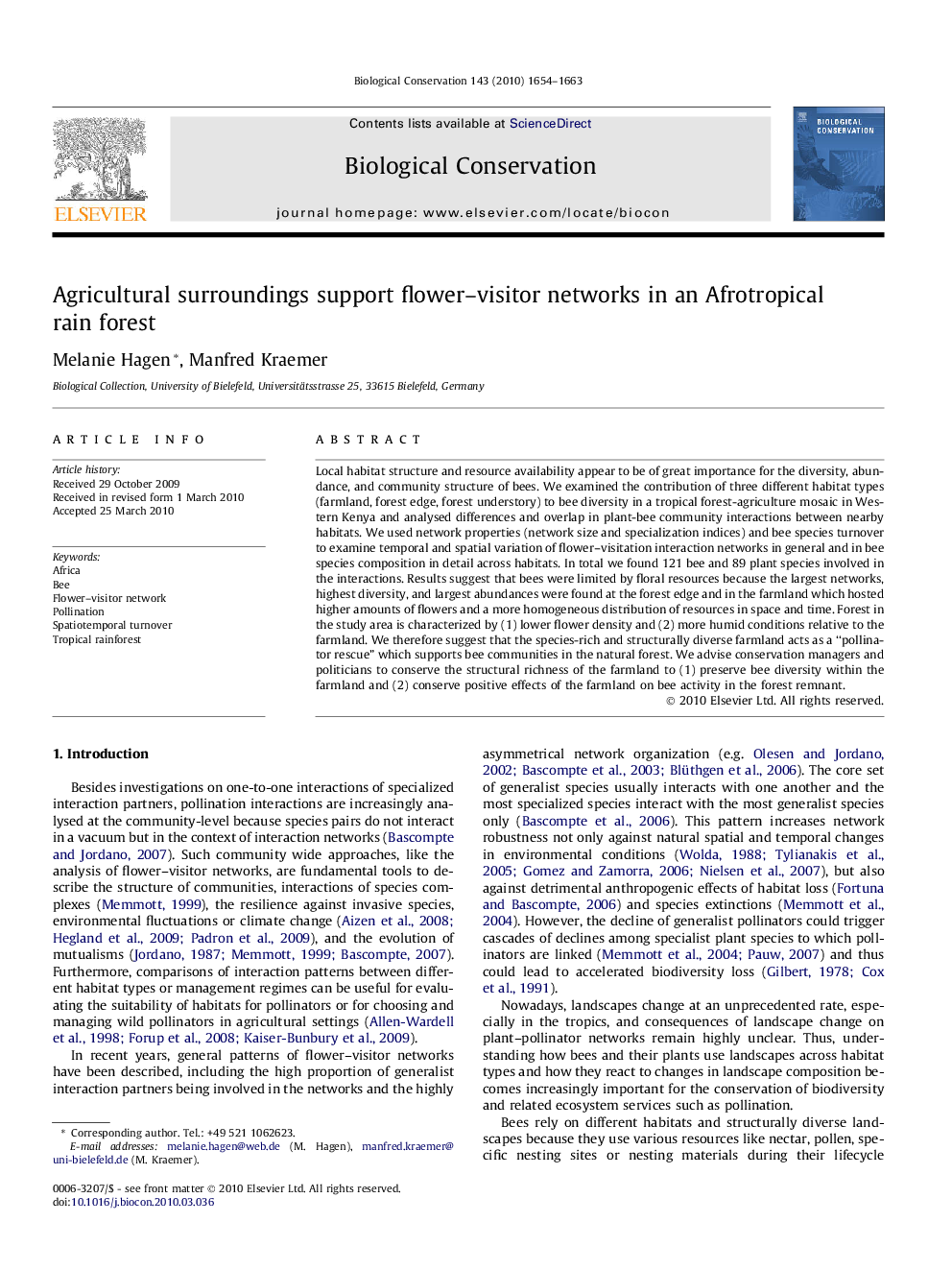| کد مقاله | کد نشریه | سال انتشار | مقاله انگلیسی | نسخه تمام متن |
|---|---|---|---|---|
| 4386147 | 1304558 | 2010 | 10 صفحه PDF | دانلود رایگان |
عنوان انگلیسی مقاله ISI
Agricultural surroundings support flower-visitor networks in an Afrotropical rain forest
دانلود مقاله + سفارش ترجمه
دانلود مقاله ISI انگلیسی
رایگان برای ایرانیان
کلمات کلیدی
موضوعات مرتبط
علوم زیستی و بیوفناوری
علوم کشاورزی و بیولوژیک
بوم شناسی، تکامل، رفتار و سامانه شناسی
پیش نمایش صفحه اول مقاله

چکیده انگلیسی
Local habitat structure and resource availability appear to be of great importance for the diversity, abundance, and community structure of bees. We examined the contribution of three different habitat types (farmland, forest edge, forest understory) to bee diversity in a tropical forest-agriculture mosaic in Western Kenya and analysed differences and overlap in plant-bee community interactions between nearby habitats. We used network properties (network size and specialization indices) and bee species turnover to examine temporal and spatial variation of flower-visitation interaction networks in general and in bee species composition in detail across habitats. In total we found 121 bee and 89 plant species involved in the interactions. Results suggest that bees were limited by floral resources because the largest networks, highest diversity, and largest abundances were found at the forest edge and in the farmland which hosted higher amounts of flowers and a more homogeneous distribution of resources in space and time. Forest in the study area is characterized by (1) lower flower density and (2) more humid conditions relative to the farmland. We therefore suggest that the species-rich and structurally diverse farmland acts as a “pollinator rescue” which supports bee communities in the natural forest. We advise conservation managers and politicians to conserve the structural richness of the farmland to (1) preserve bee diversity within the farmland and (2) conserve positive effects of the farmland on bee activity in the forest remnant.
ناشر
Database: Elsevier - ScienceDirect (ساینس دایرکت)
Journal: Biological Conservation - Volume 143, Issue 7, July 2010, Pages 1654-1663
Journal: Biological Conservation - Volume 143, Issue 7, July 2010, Pages 1654-1663
نویسندگان
Melanie Hagen, Manfred Kraemer,